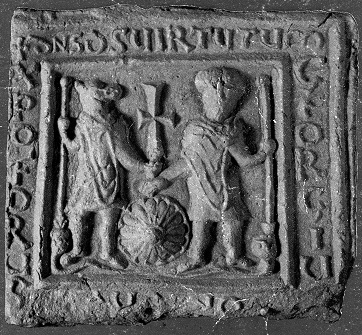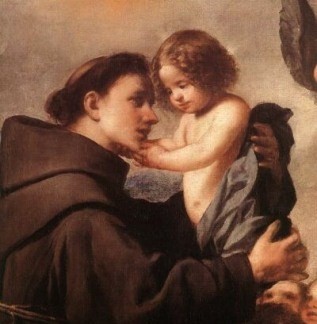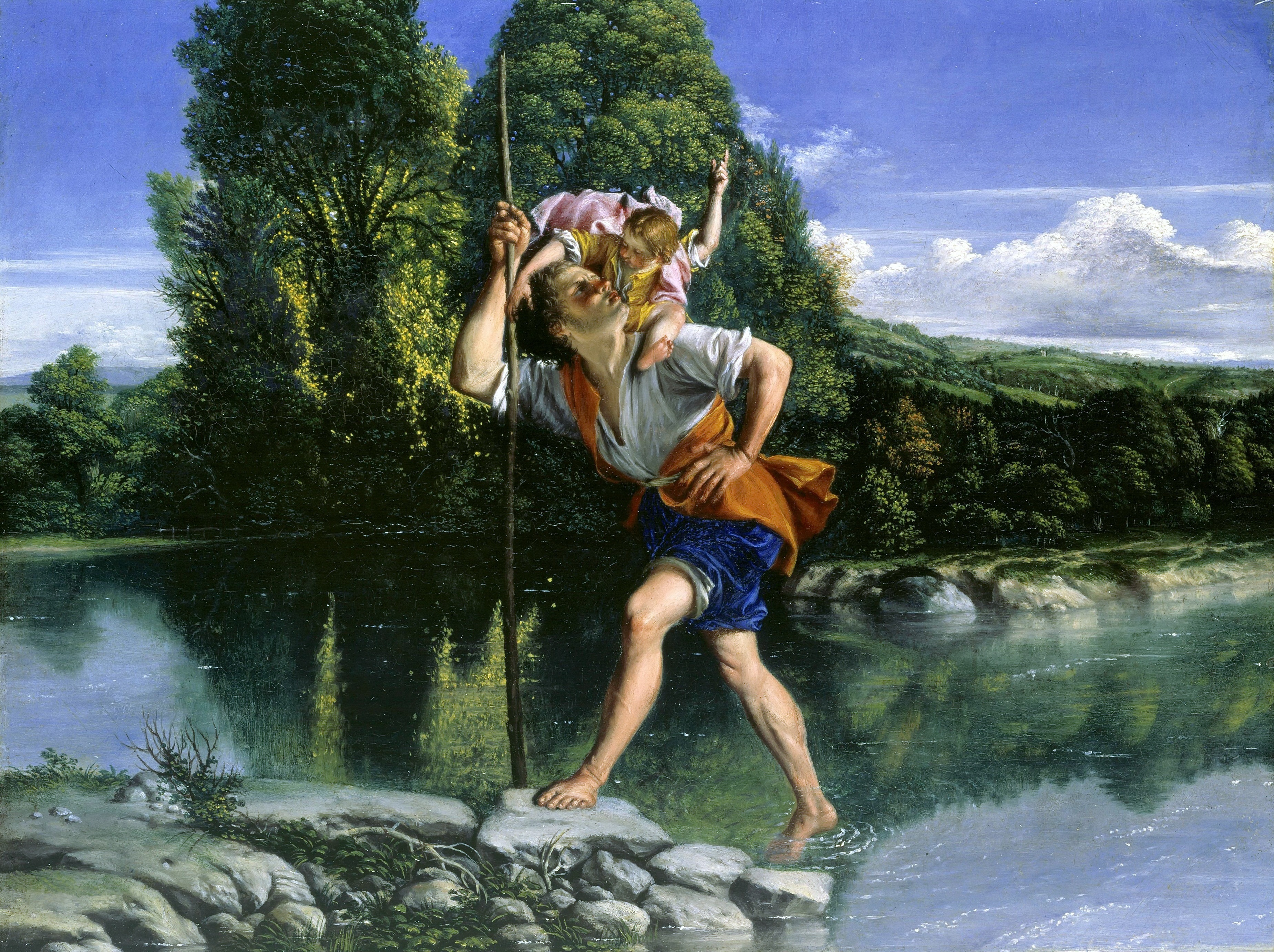|
St Botolph's Church, Slapton
The Church of St Botolph's, Slapton, also referred to as Slapton, St Botolph, is the ancient parish church of the village of Slapton, Northamptonshire, Slapton near Towcester in West Northamptonshire, United Kingdom. Constructed sometime around the late 12th and early 13th centuries the church is notable for its almost complete surviving set of late medieval wall paintings, widely considered the finest in Northamptonshire. The interior was described by Nikolaus Pevsner as "memorably intimate". The church is designated as a Grade I listed building. History Constructed on an area of high ground at the north end of the modern village, the churches history is intertwined with that of the villagers and Slapton Manor, located immediately to the west of the church. Its construction would have been overseen by the Manor House, at that time owned by a branch of the De Lucy family who are commemorated by the inclusion of their family crest in the east window over the high altar. The Knight f ... [...More Info...] [...Related Items...] OR: [Wikipedia] [Google] [Baidu] |
Slapton, Northamptonshire
Slapton is a small village in Northamptonshire, England, about from Towcester and the same from Silverstone. It is close to the A43 road which links the M40 motorway junction 10 with the M1 motorway, M1 junction 15A at Northampton. Central London is about 60 miles south of M40 junction 10. At the 2011 Census the population remained less than 100 and was included in the civil parish of Whilton. The village is the home of St Botolph's Church, Slapton#The Slapton Wall Paintings, The Slapton Wall Paintings, an extraordinary and rare set of surviving 14th and 15th century wall paintings in the parish church. The village's name means 'farm/settlement which is slippery' or 'farm/settlement which is muddy'. Governance Slapton is represented on Woodend, Northamptonshire, Woodend Parish Council. Prior to 2019–2023 structural changes to local government in England#Northamptonshire, local government changes in 2021 it formed part of the Blakesley & Cote ward of South Northamptonshire, So ... [...More Info...] [...Related Items...] OR: [Wikipedia] [Google] [Baidu] |
Mass Of Saint Gregory
The Mass of Saint Gregory is a subject in Catholic art which first appears in the late Middle Ages and was still found in the Counter-Reformation. Pope Gregory I (–604) is shown saying Mass just as a vision of Christ as the ''Man of Sorrows'' has appeared on the altar in front of him, in response to the Pope's prayers for a sign to convince a doubter of the doctrine of transubstantiation. History of the story and the image The earliest version of the story is found in the 8th-century biography of Gregory by Paul the Deacon, and was repeated in the 9th-century one by John the Deacon. In this version, the Pope was saying Mass when a woman present started to laugh at the time of the Communion, saying to a companion that she could not believe the bread was Christ, as she herself had baked it. Gregory prayed for a sign, and the host turned into a bleeding finger. This story is retained in the popular 13th century compilation the ''Golden Legend'', but other versions conflate the ... [...More Info...] [...Related Items...] OR: [Wikipedia] [Google] [Baidu] |
Francis Of Assisi
Giovanni di Pietro di Bernardone ( 1181 – 3 October 1226), known as Francis of Assisi, was an Italians, Italian Mysticism, mystic, poet and Friar, Catholic friar who founded the religious order of the Franciscans. Inspired to lead a Christianity, Christian life of poverty, he became a Mendicant, beggar and itinerant preacher. One of the most venerated figures in Christianity, Francis was canonized by Pope Gregory IX on 16 July 1228. He is commonly portrayed wearing a brown Religious habit, habit with a rope tied around his waist, featuring three knots symbolizing the evangelical counsels of poverty, chastity, and obedience. In 1219, he went to Egypt in an attempt to convert the sultan al-Kamil and put an end to the conflict of the Fifth Crusade. In 1223, he arranged for the first live nativity scene as part of the annual Christmas celebration in Greccio. According to Christian tradition, in 1224 Francis received the stigmata during the Vision (spirituality), apparition of ... [...More Info...] [...Related Items...] OR: [Wikipedia] [Google] [Baidu] |
Weighing Of Souls
The weighing of souls () is a religious Motif (narrative), motif in which a person's life is assessed by weighing their soul (or some other part of them) immediately before or after death in order to judge their fate. This motif is seen in medieval Christianity. Ancient Egyptian religion In Egypt, this concept of a judgement after life to determine the fate of the living is first seen in the Old Kingdom around 2800 B.C.E. It was first imagined as a weighing in the Coffin Texts during the Middle Kingdom of Egypt, Middle Kingdom (2160-1580 B.C.E.). The most well known form of the ceremony, where Weighing of the Heart, people's hearts are weighed on a Weighing scale, scale against a feather, is found in the Book of the Dead during the New Kingdom of Egypt, New Kingdom (1580-1090 B.C.E). The Weighing of the Heart would take place in Duat (the Underworld), in which the dead were judged by Anubis, using a feather, representing Ma'at, the goddess of truth and justice responsible for ... [...More Info...] [...Related Items...] OR: [Wikipedia] [Google] [Baidu] |
St Michael
Michael, also called Saint Michael the Archangel, Archangel Michael and Saint Michael the Taxiarch is an archangel and the warrior of God in Christianity, Judaism, and Islam. The earliest surviving mentions of his name are in third- and second-century BC Jewish works, often but not always apocalyptic, where he is the chief of the angels and archangels, and he is the guardian prince of Israel and is responsible for the care of the people of Israel. Christianity conserved nearly all the Jewish traditions concerning him, and he is mentioned explicitly in Revelation 12:7–12, where he does battle with Satan, and in the Epistle of Jude, where the archangel and the devil dispute over the body of Moses. Old Testament and Apocrypha The Book of Enoch lists him as one of seven archangels (the remaining names are Uriel, Raguel, Raphael, Sariel, Gabriel, and Remiel), who, in the Book of Tobit, “stand ready and enter before the glory of the Lᴏʀᴅ”. The fact that Michael is ... [...More Info...] [...Related Items...] OR: [Wikipedia] [Google] [Baidu] |
Virgin Mary
Mary was a first-century Jewish woman of Nazareth, the wife of Saint Joseph, Joseph and the mother of Jesus. She is an important figure of Christianity, venerated under titles of Mary, mother of Jesus, various titles such as Perpetual virginity of Mary, virgin or Queen of Heaven, queen, many of them mentioned in the Litany of Loreto. The Eastern Orthodox Church, Eastern and Oriental Orthodox, Catholic, Anglican, Methodist, Reformed Christianity, Reformed, Baptist, and Lutheran churches believe that Mary, as mother of Jesus, is the Theotokos, Mother of God. The Church of the East historically regarded her as Christotokos, a term still used in Assyrian Church of the East liturgy. Other Protestant views on Mary vary, with some holding her to have lesser status. She has the Mary in Islam, highest position in Islam among all women and is mentioned numerous times in the Quran, including in a chapter Maryam (surah), named after her.Jestice, Phyllis G. ''Holy people of the world: a cros ... [...More Info...] [...Related Items...] OR: [Wikipedia] [Google] [Baidu] |
St George And The Dragon
In a legend, Saint Georgea soldier venerated in Christianity—defeats a dragon. The story goes that the dragon originally extorted tribute from villagers. When they ran out of livestock and trinkets for the dragon, they started giving up a human tribute once a day. And, one day, the princess herself was chosen as the next offering. As she was walking towards the dragon's cave, St. George saw her and asked her why she was crying. The princess told the saint about the dragon's atrocities and asked him to flee immediately, in fear that he might be killed too. But the saint refused to flee, slew the dragon, and rescued the princess. The narrative was first set in Cappadocia in the earliest sources of the 11th and 12th centuries, but transferred to Libya in the 13th-century ''Golden Legend''. [...More Info...] [...Related Items...] OR: [Wikipedia] [Google] [Baidu] |
Child Jesus
The Christ Child—also known as Baby Jesus, Infant Jesus, Child Jesus, Divine Child, Divine Infant and the Holy Child—refers to Jesus in Christianity, Jesus Christ during his early years. The term refers to a period of life of Jesus, Jesus' life, described in the canonical Gospels, encompassing his nativity of Jesus, nativity in Bethlehem, the visit of the Magi, and his Presentation of Jesus, presentation at the Temple in Jerusalem. It also includes his childhood, culminating in the event where his parents Finding in the Temple, find him in the Temple at age 12, after which the Gospels Unknown years of Jesus, remain silent about his life until the start of his ministry of Jesus, ministry. Liturgical feasts Liturgical feasts relating to Christ's infancy and childhood include: * Christmas, The Feast of the Nativity of Jesus Christ (25 December) * The Feast of the Circumcision of Christ#Byzantine Catholic and Eastern Orthodox Churches, Feast of the Circumcision of Christ (1 Janu ... [...More Info...] [...Related Items...] OR: [Wikipedia] [Google] [Baidu] |
St Christopher
Saint Christopher (, , ; ) is venerated by several Christian denominations. According to these traditions, he was a martyr killed in the reign of the 3rd-century Roman emperor Decius (), or alternatively under the emperor Maximinus Daia (). Churches and monasteries were named after him by the 7th century. There is no evidence for the historicity of the saint.Britannica, The Editors of Encyclopaedia. "Saint Christopher" Encyclopedia Britannica, 25 July 2024, https://www.britannica.com/biography/Saint-Christopher. Accessed 25 October 2024. The most famous legend connected to the saint recounts that after converting to Christianity, he devoted his life to carrying travelers across a river. One day he carried an unknown young boy across a river after which the boy revealed himself ... [...More Info...] [...Related Items...] OR: [Wikipedia] [Google] [Baidu] |
Easter Sepulchre
An Easter Sepulchre is a feature of Late Medieval British and Irish church interior architecture. Description The Easter Sepulchre is an arched recess generally in the north wall of the chancel, in which from Good Friday to Easter day were deposited the crucifix and sacred elements in commemoration of Christ's entombment and resurrection. It was generally only a wooden structure, which was placed in a recess or on a tomb. Distribution The Easter Sepulchre is only found in England Ireland and Wales, the practice having been peculiar to the Sarum Rite. However, there is a ruin presumed to be an Easter sepulchre at Kildrummy in north-east Scotland. Use The Easter Sepulchre contained the Blessed Sacrament of the altar, the Host. Following the doctrine of the Real Presence, i.e. that Jesus is physically present within the Host, on Good Friday the Host was taken from the tabernacle where it had been placed following the Maundy Thursday celebration of the Last Supper and, wrapped in ... [...More Info...] [...Related Items...] OR: [Wikipedia] [Google] [Baidu] |
Piscina
A piscina is a shallow basin placed near the altar of a church, or else in the vestry or sacristy, used for washing the communion vessels. The sacrarium is the drain itself. Lutherans and Anglicans usually refer to the basin, calling it a piscina. For Catholics and Lutherans, a sacrarium is "special sink used for the reverent disposal of sacred substances. This sink has a cover, a basin, and a special pipe and drain that empty directly into the earth, rather than into the sewer system" (USCCB, Built of Living Stones, 236). Precious or sacred items are disposed of, when possible, by returning them to the ground. They are in some cases used to dispose of materials used in the sacraments and water from liturgical ablutions. They are found in Catholic, Anglican, and Lutheran churches, and a similar vessel is used in Eastern Orthodox churches. History The ''piscina'' is a Latin word originally applied to a fish pond, and later used for natural or artificial pools for bathing, and a ... [...More Info...] [...Related Items...] OR: [Wikipedia] [Google] [Baidu] |







